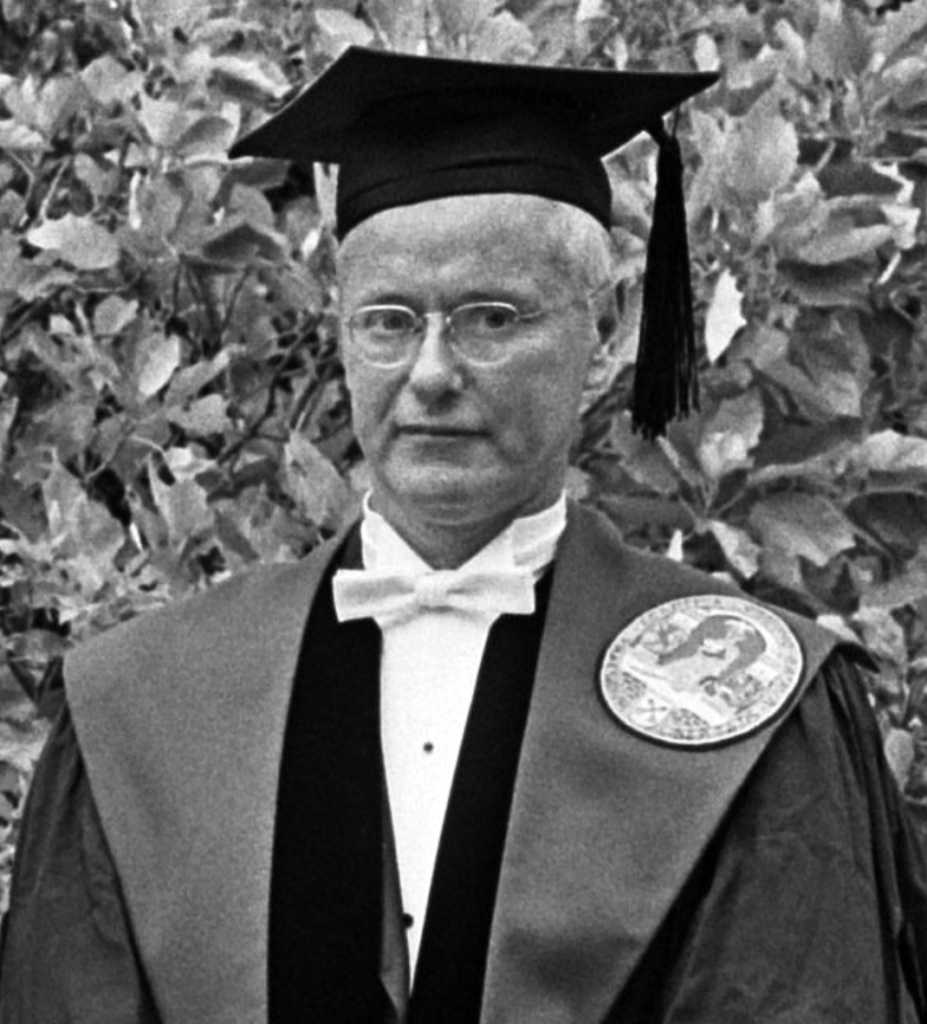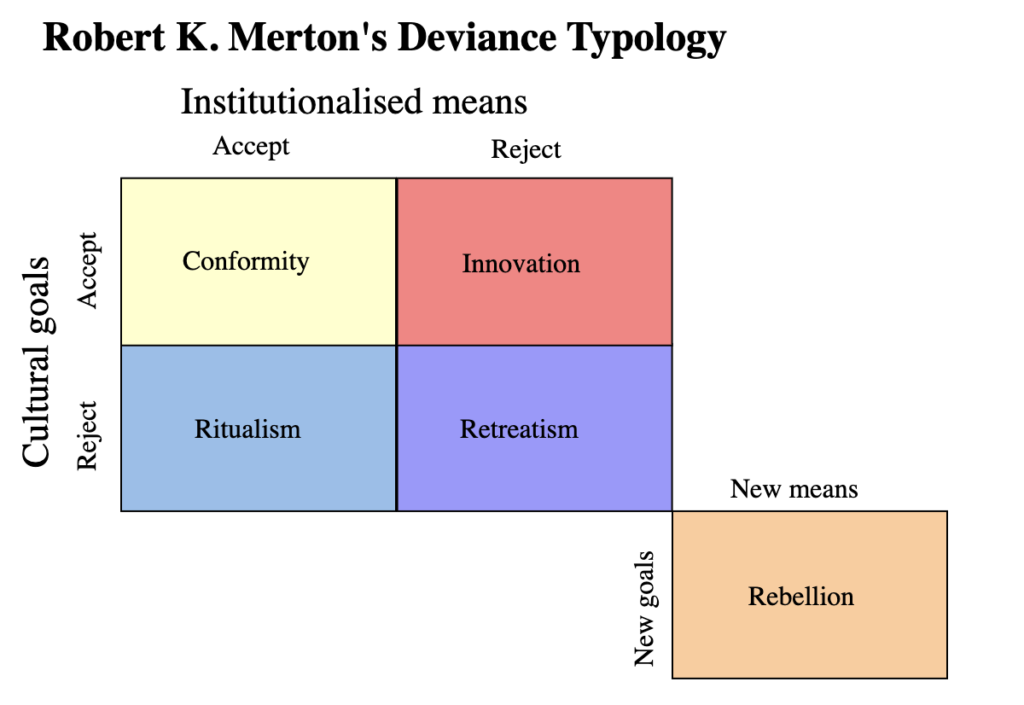Anomie Theory
Image of Robert K. Merton. (Nederlands: Eredoctoraten bij Leidse Universiteit uitgereikt, v.l.n.r. prof. dr. J. Waller , prof. dr. A. Giroud , de heer H. R. van Heekeren , prof. dr. R. K. Merton by Eric Koch for Anefo from WikimediaCommons)

The American Dream offers an institutionally approved goal, yet not everyone possesses the culturally endorsed means to attain it. The goal of the American dream is expressed through various forms such as wealth, property, and class mobility, through the means of hard work and persistence in a traditional job. Anomie theory acknowledges the socially accepted goals and means that create the normative standards (Merton 2002). However, the goals and means may not always be achievable. There are five potential outcomes of adapting to these goals: conformity, innovation, ritualism, retreatism, and rebellion. Conformity involves attaining cultural goals through institutional approved means, while innovation is achieving these goals through alternative methods. Ritualism is having access to institutional means despite not accepting cultural goals. Retreatism occurs when both goals and means are neither accepted nor achieved, and rebellion involves rejecting both cultural goals and institutional means (Merton 2002).
The theory’s limitations lie in its lack of focus on systemic oppression that overcomes individuals’ cultural goals and means. Social inequality remains unaddressed, ignoring the impact of racism and poverty on an individual’s goal achievement and means. A recent study (Messner, Rosenfeld, and Hövermann 2019) acknowledges these institutional challenges, criticizing the Mertonian anomie tradition for neglecting broader social structures, particularly social institutions and their interrelationships. Incorporating these elements into Merton’s theory offers a more inclusive analytical approach, recognizing an interdependent relationship between institutions, socialization, social control, and social support functions. This recognition provides a more accurate depiction of why individuals facing oppression are less likely to achieve cultural goals through socially acceptable means. This adaptation and critique of Merton’s theory is not a new discovery. Various studies have utilized the Mertonian Anomie theory as a base for research and incorporate social structures and how they interfere with individuals (Hövermann, Messner, and Zick 2015; Hughes, Schaible, and Gibbs 2015; Mafrolla, Matozza, and D’Amico 2023).
The diagram below reflects Robert Merton’s Anomie Theory. This visual analysis allows for a basic understanding of the five outcomes. (This is a diagram depicting Robert K. Merton’s Social Strain Theory by User:Wykis from WikimediaCommons)

This framework is significant when examining the American Dream as an institutionally approved goal. Merton’s theory became a variation of Durkheim’s original Anomie. Durkheim’s theory claimed that deviance combats anomie in comparison to Merton who believes anomie creates deviance (Hilbert 1989). Merton’s theory specifically explores the relationship between deviant behavior, social norms, and the inability to access culturally approved means leading to alternate approaches to achieve the institutionally approved goals of success. However, some individuals are deprived of the means to achieve these goals (Hanson and White 2011), thus driving them to alternate means to realize their version of the American Dream. This can be specifically noted in the rap and music industry as it is a nontraditional and precarious job. Using music as an alternate route to achieve the American dream of success and wealth highlights an innovative approach, as often these aspiring rappers do not have the equal access to institutionally approved means because of systemic racism (Alexander 2020; Beech et al. 2021; Bailey and DiPrete 2016; Howell and Caisey 2019; Sullivan 2003).